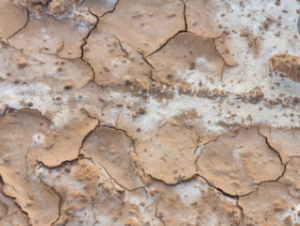Soil salinization is one of the most common environmental problems. The area of saline-alkali soil in China is up to 3467hm2, which is increasing year by year, but only a small part of it is cultivated, and a large number of saline-alkali soil is to be developed and utilized, which is an important reserve land resource. China has a large population and insufficient arable land, so it is very important to breed saline-alkali tolerant forage and develop broad saline-alkali land.

Lolium multiflorum is a plant of the genus Lolium of Gramineae, which has a fast growth rate, rich nutrition, high digestibility, and is suitable for intensive cultivation and utilization. It has become one of the most widely planted forages in agricultural areas, with the largest planting area. However, Lolium multiflorum has moderate tolerance to soil salinity and alkalinity and is threatened by soil salinization in the main production areas of Lolium multiflorum in China. Therefore, screening salt-tolerant Lolium multiflorum and studying its salt tolerance mechanism is of great significance to the development of agriculture and animal husbandry.
Several germplasm resources of Lolium multiflorum were collected by a molecular breeding group of turfgrass and forage in Wuhan Botanical Garden, Chinese Academy of Sciences, and their salt tolerance was evaluated systematically. In this paper, they analyzed the mechanism of salt tolerance of Lolium multiflorum from physiological and biochemical levels and metabolic levels. Compared with salt-sensitive germplasm, salt-tolerant germplasm had higher leaf relative water content and better forage quality.
Further studies on the comparison of the antioxidant enzyme system and photooxygenation system showed that the cell damage induced by reactive oxygen species of salt-tolerant germplasm under salt stress was lighter, and the photosynthetic efficiency was higher.
The above results showed that the salt tolerance germplasm was less damaged by salt than sensitive germplasm. By comparing the ability of plants to absorb and transport ions, researchers found that compared with salt-tolerant germplasm, salt-sensitive germplasm absorbed more sodium ions and had a stronger ability to transport sodium ions to the aboveground part. Therefore, it was speculated that absorbing fewer sodium ions and inhibiting its transfer to the aboveground part was one of the mechanisms of salt tolerance.
In addition, 41 primary metabolites including amino acids, organic acids, fatty acids, and sugars were identified by a comparative analysis of the salt tolerance mechanism of 'abundant' from the metabolic level. Compared with salt-tolerant germplasm, the metabolites of salt-sensitive germplasm 'Angus' were more sensitive to salt stress. This study provides basic information for exploring the salt tolerance mechanism of Lolium multiflorum.